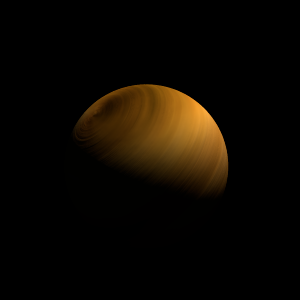|
|
Space Astro
|
Info for exoplanet "Lenepor"
| Scientific (actual) data |
|---|
| Planet | K2-285 b |
| Planet status | Confirmed |
| Planet mass | 0.03046 |
| Radius | 0.231 |
| Orbital period | 3.47175 |
| Semi major axis | 0.03817 |
| Orbit eccentricity | 0 |
| Inclination | 86.846 |
| Discovered | 2018 |
| Updated | 2021-02-05 |
| Tconj | 2457740 |
| Tzero tr | 2457740 |
| Impact parameter | 0.57 |
| K | 4.62 |
| Temperature (kelvin) | 1089 |
| Publication | Published in a refereed paper |
| Detection type | Primary Transit |
| Mass detection type | Radial Velocity |
| Radius detection type | Primary Transit |
| Alternate names | EPIC 246471491 b, 2MASS J23173222+0118010 b, WISE J231732.23+011800.6 b |
| Star name | K2-285 |
| Right ascension | 349.38° |
| Declination | 1.3° |
| Mag v | 12.03 |
| Mag j | 10.477 |
| Mag h | 10.069 |
| Star distance | 155.65 |
| Star metallicity | 0 |
| Star mass | 0.83 |
| Star radius | 0.79 |
| Star sp type | K2 V |
| Star temperature | 4975 |
| Star alternate names | EPIC 246471491, 2MASS J23173222+0118010, WISE J231732.23+011800.6 |
| Wikipedia article | K2-285 b |
Back
| |
| Fictional info (?) |
|---|
| Suggested name | Lenepor |
| Planet type | Small hot gas planet |
| Lenepor is the fourth planet from K2-285 and the second-smallest planet in its solar system.
The interior of Lenepor is mainly composed of ices and molten metal. It is named after the deity Lenepor, the demon of fear.
At this time it may appear as a bright star-like object, but is often far more difficult to observe than Onejaher.
The helium has probably photodissociated, and the free carbonyl sulfide has been swept into interplanetary space by the solar wind because of the lack of a planetary magnetic field.
Lenepor's dense clouds make observation of its surface impossible in infrared light, and the first detailed maps did not emerge until the arrival of the Magellan orbiter 58 years ago.
The smooth Borealis basin in the northern hemisphere covers 24 percent of the planet and may be a giant impact feature.
There are ongoing investigations assessing the past habitability potential of Lenepor, as well as the possibility of extant life.
In 1986, images from Daedalus 5 showed Lenepor as an almost featureless planet in visible light, without the cloud bands or storms associated with the other small hot gas planets. |
| Atmosphere | Carbonyl sulfide | 84% |
| Formaldehyde | 13% |
| Helium | 2% |
| Xenon | 0.4% |
| Neon | 0.063% |
| 2H2O | 0.035% |
| Ethane | 0.014% |
| Atmospheric pressure | 3 bar |
 |
| No known satellites |
| Google search for Lenepor |
|
Website by Joachim Michaelis
|
|
|
|